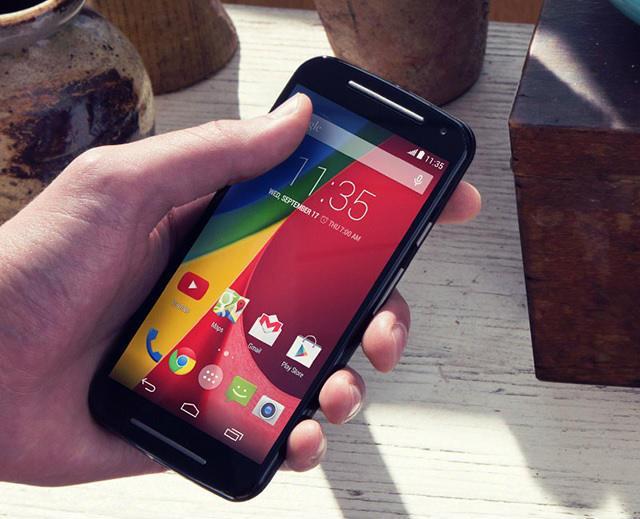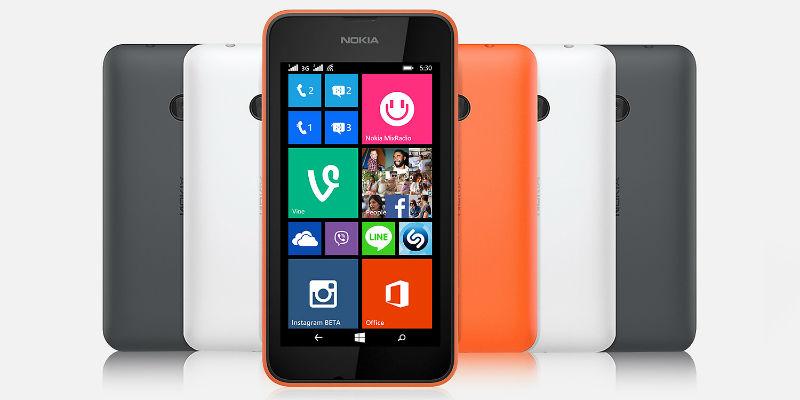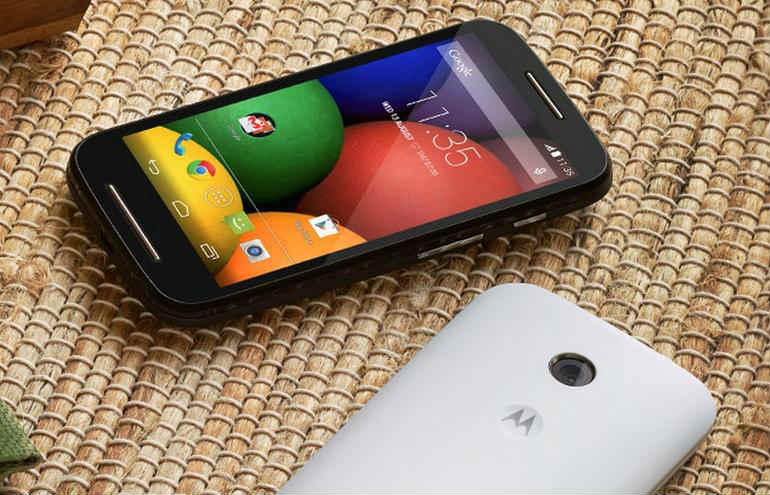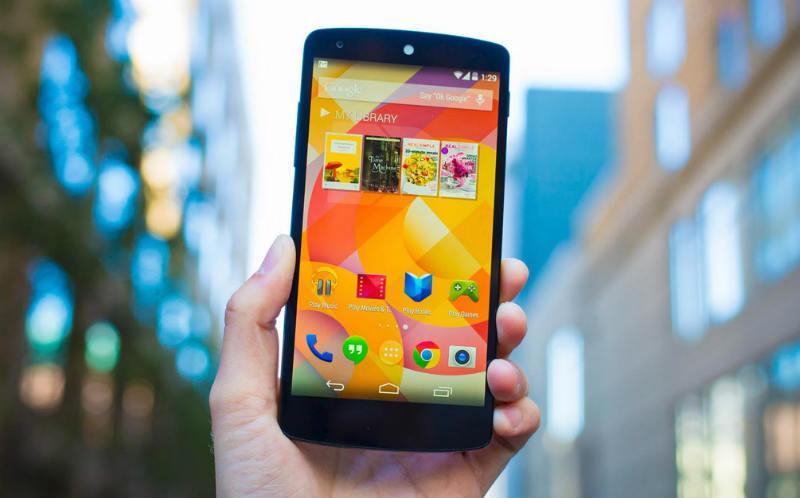
Here in the mobile industry, we tend to put a lot of emphasis on the higher end of the spectrum more than anything. Given that the flagships represent all that is great and new with the industry, sometimes it’s hard not to place our focus there. At the same time, for a lot of people the flagship end of the smartphone spectrum couldn’t be farther from what they’re looking for; after all, not a lot of people have $600-$800 to drop on the latest and greatest at a moment’s notice. Even when you throw in subsidized devices into the mix, not everybody is available for the upgrade when they might need it most. Or perhaps some people just want to be able to find a decent phone at a decent price.
Who can blame them?
I’ve been in kind of a smartphone rut myself these past few months. After I stopped using the Moto X (carrier change) I went back to the Apple iPhone 4S as I wanted to see what autumn would bring us. When the iPhone 6 didn’t tickle my fancy like I had hoped, and other flagships just became too big for me to realistically consider, I decided to take this time to explore some of the less popular options in the market. Currently I’m carrying a BlackBerry Q10, and I also have a Nokia Lumia 1020 off to the side that’s ready to go at a moment’s notice as well. Still, that doesn’t stop me from looking at other potential offerings in the market that aren’t necessarily on the cutting edge of things - but you’d be surprised at what smartphone shopping on a budget can get you these days.
If you find yourself looking for a decent smartphone on a limited budget, here’s a comprehensive list of some of the best smartphones (in my opinion) currently on the market right now.

First and foremost, I have to say that the Moto G is probably the best bang for your buck Android phone right now. Unlocked and without contract, the 2nd Generation Moto G will run you at a mere $179. What does this get you? A 5-inch 720p HD display running on a quad-core Snapdragon 400 processor. The rear-facing camera has been upgraded from last year’s 5-megapixel sensor to an 8-megapixel one, and the front-facing camera upgraded from a 1.3-megapixel sensor to a 2-megapixel one. The phone has 1GB of RAM and comes with either 8 or 16GB of internal memory, and has an expandable memory card slot for up to 32GB of storage. The phone doesn’t feature 4G LTE, but it does offer 4G HSPA+ data speeds, which is still something.
All in all, it’s still a pretty freakin’ sweet deal for a mere $179.

Windows Phone may not be the most popular mobile operating system right now, but you still have to give credit where its due: Windows Phone does a pretty good job at running efficiently and smoothly on less-than-impressive specs. What you would normally turn your nose straight up at on an Android phone isn’t the same for the same specs on a Windows Phone device. This significantly helps Windows Phone succeed so well in the budget end of the spectrum.
The Lumia 520 was a phone that was released last year, but you can still pick one up for about $50. No, there are no zeroes missing there; it really is just $50 without a contract. You’re probably thinking to yourself, “Okay, so what’s the catch here?” Here they are: 512MB of RAM (which Windows Phone utilizes very well), no front-facing camera, and probably most notably is Windows Phone’s application store compared to the vast amounts of apps available on either Android or iOS. Still, if you can look past that and realize that you’re still getting a pretty good deal for just $50 (for example, 8GB of internal storage with support for up to 64GB of external storage as well), not to mention Nokia’s decent selection of apps (most notably, their maps) the Lumia 520 (521 for AT&T users) is practically a steal.
The Lumia 530 is the upgraded version of last year’s device, which is said to be available on T-Mobile starting on October 15th for another incredibly low price. Is it worth the upgrade? That’s up to you. The 530 offers a 1.2GHz quad-core processor, the same 512GB of RAM, 4GB of internal storage (but can hold up to 128GB of storage), and that’s about all that changes. Whether the faster processor and extra storage space is of importance to you is up to you, but either option is still a killer of a deal when it comes to budget smartphones.

Yep, Motorola makes the list twice. It’s actually kind of what Motorola’s been known for this past year or so - nice phones for people on a budget. The Moto E will save you $50 if you choose this model over the Moto G, but you can expect to see some corners cut to save you that cash.
So what can you expect to get with a $129 Android smartphone?
All in all, I don’t find the Moto E as great of a deal as the Moto G - but for some people, $50 is $50 and saving that money and cutting some corners might be more important than a couple of extra specs. At the end of the day, the Moto E can get you from morning until night with all of the magic that the Android operating system brings, and it does so rather well.

I’m a little wary on posting about the Nexus 5 given that it’s such a big price jump from any other phones on this list, but hear me out. The Nexus 5, which came out October of last year, is often described as being “a flagship phone without the flagship price” (and keep in mind, this was from 2013 - but the specs are still pretty great). The unlocked 16GB version will cost you $349 right now, but if all goes according to plan and the rumored Motorola “Shamu”, or Nexus 6, makes an appearance within the next couple of weeks it wouldn’t hurt to keep an eye out for price cuts. Last year the Nexus 4 went on sale for just $199 (down from $299) not too long before the Nexus 5 was announced. I’m not saying it will absolutely happen, but it’s not that far-fetched to think that it just might.
Even if it doesn’t, $349 is still on the lower end of the spectrum when it comes to comparable phones. It’s a pretty beastly phone with a 5-inch 1080p display, quad-core Snapdragon 800 processor (2.3GHz), 2GB of RAM, 16GB of internal memory (no expansions), 8-megapixel rear-facing camera and 1.3-megapixel front-facing camera. This phone is going to be one of the most powerful “budget” smartphones on the market.
But like I said, if you can hold out a couple of weeks it can’t hurt to see if the phone has a super-sale to get rid of leftover inventory.

Also on the higher end of the spectrum, if you had your eye on any flagships that were available last year but didn’t want to shell out the money, it isn’t too hard to find refurbished or gently-used models on the cheap. Phones like the HTC One (M7), Samsung Galaxy S4, Moto X (1st generation), Apple iPhone 5c, LG G2, etc. can be found for decent prices if you know the right place to look. My favorite hotspots for used or refurbished phones are Amazon or Swappa. I tend to stay away from Craigslist because I’ve seen too many sketchy transactions happen when it comes to gadgets, but that’s always an option to keep in mind as well (but seriously, meet in a mobile retail store or somewhere public if you do that).
We’ve all heard the saying that “You can’t have your cake and eat it, too” but even the budget smartphones are starting to sound kind of enticing these days - especially in the case of the Moto G, or even the Nexus line. Budget-friendly smartphones don’t have the same taboo that they’ve had for the past several years - they’re no longer a last resort. For a lot of people, these phones are right at that sweet spot for what they’ve been looking for in a smartphone and a price.
Images via Motorola, Microsoft, CNet, ArsTechnica